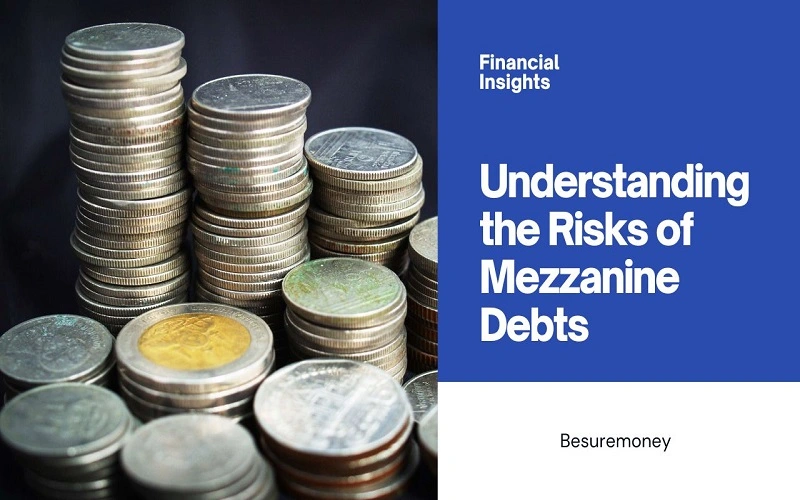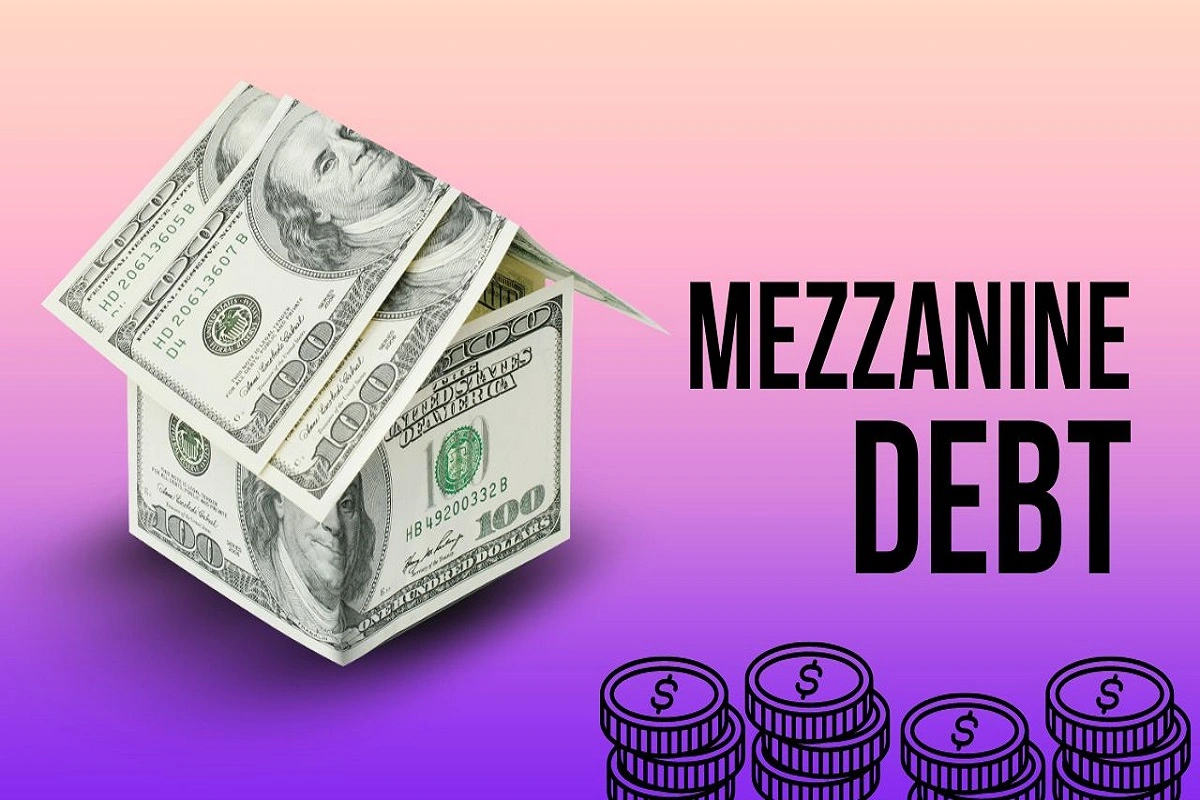A corporation in this position must then weigh such considerations as how much debt or equity may be sustained at a historic or desired credit rating, and what leverage ratio may be appropriate, given the volatility of its future share price. Mezzanine financing is often in a world of new forms of mezzanine debt every day and this is a more complex solution. Were you aware that it has been demonstrated that the global mezzanine finance market has increased as various forms of hybrid products gain a place in the structured finance market?
Mezzanine debt falls in the capital structure between senior debt and equity and presents unique benefits and risks. A useful tool for companies wanting to expand their capital resources, without having to give up huge ownership
What is mezzanine debt?
Mezzanine debt is an extremely flexible and ideal form of financing that lies in between traditional debt and equity and is an ineffable solution for growing companies with capital needs. The structure and features:
Structures:
Mezzanine debt is between the company’s senior debt and equity position. Thus, in a bankruptcy situation, mezzanine debt holders are repaid after senior debt holders but before equity holders. On one hand, it provides debt-like stable income and on the other, it offers for equity kind of potential upside.
Key Features:
Interest Rates:
Mezzanine debt has been to resemble equity funding, it adds to the expenses of the enterprise because of its high interest rate. These rates may be either fixed or variable.
Repayment terms:
Unlike senior debts, which often require regular principal repayments, mezzanine debt may include deferred interest payments or balloon payments at maturity. Such a structure allows borrowers to benefit from cash flow flexibility.
Equity Conversion:
One thing that specifically sets mezzanine debt apart from senior debt is the ability to convert to equity. The lenders also may be compensated in warrants or an option to purchase an ownership stake in the borrowing company, financing their growth down the road! This feature adds yet another layer of return potential above and beyond the interest payments.
What are the benefits of mezzanine debts?

Mezzanine debt provides several advantages that make it an appealing borrowing option for companies. Below are some important advantages:
Flexible financing:
Flexibility is one of the most significant advantages of mezzanine debt. This is favorable because it does not have some of the sharing agreements typical in senior debts, can have longer or more flexible terms of repayment than senior debt, and can hear fewer covenants. For companies looking to grow and in need of capital, this flexibility might be especially attractive as senior debts tend to bring with them less flexible repayment structures. Mezzanine financing is, therefore, an adaptable source of capital since mezzanine lenders are often amendable to structuring terms to satisfy the borrower’s specific needs.
Preservation ownership:
Mezzanine debt allows businesses to gain capital without having to provide as much equity. As opposed to equity capital that demands part ownership and control, mezzanine debt instead provides owners more nearing on the company. For the founders, it is of utmost importance that they remain in control of the company they built; and the same for the current investors as well.
Growth capital:
Mezzanine financing is commonly used to finance a big chunk of the growth initiatives of the business like acquisitions, expansions, and product development. They can fund these projects eventually without the adverse cash flow and credit impacts often associated with prolonged debt pay downs suitable for companies that are in the growth phase and require significant amounts of capital to achieve their strategic objectives.
Strategic values:
Mezzanine lenders are powerful tools for providing capital and adding value from a strategic perspective as well. It offers them experience, industry connections, and advice to help the company they are lending to achieve their goals more smoothly. This added value benefits smaller companies or companies seeking to break into new markets.
Some benefits for borrowers or investors:
For borrowers:
- Access to capital with flexible terms
- Enhancing Financial Structure
For Investors:
- Attractive Returns
- Diversification and Risk Migration
- Influence and Control
What are the risks and drawbacks of mezzanine debts?

The benefits of mezzanine debt also carry potential risks and weaknesses that both borrowers and investors must be aware of. Some of the critical disadvantages include:
Higher interest rates:
These have interest rates that are less than the triple-double-digit rates often seen in mezzanine debt is subordinated debt and therefore carries a higher default risk. This means that the cost of capital will be higher for borrowers, ultimately making the business profitable. The effect of these two cost components calculated by companies is whether the potential returns from using mezzanine debt would cover the higher interest costs.
Complexity:
Mezzanine debt can also be more complex in how it is structured compared to traditional senior debt. Mezzanine lending agreements commonly include complex discussions over interest rates, repayment schedules, and warrants. Where the borrower will have an interest in several jurisdictions the legal and advisory costs for the borrower can increase further due to this additional complexity. Moreover, mezzanine financing terms and conditions can be unique, so companies need to have a clear understanding of the terms, and negotiate the deal to meet their financial objectives, etc.
Impact of financial ratios:
Mezzanine debt investments can affect a company’s financial ratios, such as its debt-to-equity and interest coverage ratios. Investors and credit rating agencies typically examine these metrics closely. An increased level of mezzanine debt could be perceived as a higher financial risk that may result in a lower credit rating of the company and a lower capability to raise funds in the future.
Repayment ratios:
Since mezzanine debt is subordinated it carries a higher risk of repayment defaults, primarily indicating during economic depressions or during times of financial instability. Mezzanine lenders are last in line to be repaid after senior debt obligations have been paid off, so they scoop up a relatively low-interest rate.
What is the market current trend in mezzanine debt?

There are several trends in the mezzanine market which help broader economic and financial developments:
1. Increasing demand for growth capital:
With an increasing number of businesses looking to scale and innovate, the demand for flexible funding routes such as mezzanine debt continues to increase. This is especially clear in areas like technology, health, and renewables where large capital is essential for development and scale.
2. Low interest rate environment:
Low-interest rate environment with the demand for higher yields driving investors to look further afield for returns, the mezzanine debt has become more attractive. The typical fixed-income investments, because traditional fixed-income opportunities often offer limited yield, mezzanine debt presents an attractive, with its ability to provide higher interest, while offering the potential for equity returns.
3. Private equity activity:
Mezzanine financing has been strong in private equity activity which has pushed mezzanine financing to grow further so much. In the private equity context, the use of the mezzanine cap can be a channel to get in a higher amount of leverage, and these investments allow the private equity firms to be in control, whether it is by way of debentures or whether it gets converted into equity.
Conclusion:
Mezzanine debt is debt offering companies use to finance their growth, acquisitions, and strategic endeavors. Here the two main benefits follow, one is a financing solution and the next is holding the asset and receiving the financial benefits which influences a lot to the investors.
The mezzanine debts market that influences a fast-paced and transitional theatre are private equity firms, mezzanine funds, banks, and institutional investors. The types of trends, that exist, such as a lack of capital to grow and technology advancements.
FAQs:
Q1. What does the mezzanine mean in finance?
Ans: The business loan called Mezzanine debt is repaid through a schedule to company cash flows. Debt and Equity— It is a modified debt funding, which requires a cash flow to repay the advance/loan but with terms that are more flexible than those of a traditional bank loan.
Q2. Why is mezzanine financing risky?
Ans: As a subordinated debt, mezzanine financing is a high-risk project in which investors invest in high-yield indent high-risk projects. On the downside, investors can lose their entire investment in the event of the company going out of business.
Q3. Is the mezzanine good or bad?
Ans: The mezzanine has been considered the way up in the theatre — but don’t dismiss them so quickly. The mezzanine is a great height to look down on the thing you’re watching (necessary for busier scenes) and it could be the upper circle if it still allows you the full view.
Q4. Is mezzanine debt amortized?
Ans: Mezzanine loans are considered “patience capital” which means they are nondilutive and will not require amortization.
Q5. Is mezzanine debt a bridge loan?
Ans: Mezzanine debt is frequently used by companies as a bridge loan for acquisition. In most all acquisitions, the acquirer will pay more than the asset base in the acquired company which will make the transaction non-bankable in the short run.
